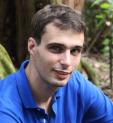Francois Quitin

I'm an academic researcher at the University of Brussels (ULB). My research focuses on proof-of-concept and embedded system design for communication systems, taking advanced theoretical ideas all the way to practice.
The focus of my research lies on implementing new techiques and methods in signal processing on hardware testbeds, thereby identifying and solving the challenges that occur when going from theory to implementation. One huge game-changers in recent years has been the widespread adoption of software-defined radios (SDR), which have really opened a new array of opportunities in RF signal processing.
Distributed synchronization : whether in distributed wireless networks or in distributed microprocessor systems, clock synchronization is a major chalenge of distributed systems. One of the main difficulties of distributed clock synchronization is making algorithms scalable, so that they can be used in networks with tens (or even hundreds) of nodes! One use case for distributed synchronization is distributed MIMO networks, where we want a lot of single-antenna terminals to emulate a multi-antenna array. We try to implement our algorithms and techniques on software-defined radio testbeds, using mixture of FPGA and software solutions.
Sensor fusion with software-defined radios : one of the cool things about SDRs is that we have access to the radio signal at baseband level, so that we can access information about the signal that is usually hidden when we use conventional RF chips. Examples of such information are the time-of-arrival of a received packet, the phase of the correlation function at the receiver, etc. By fusing these low-levels RF characteristics with external sensors (such as IMU, GPS or LiDAR), we are able to use powerfull sensor fusion algorithms to achieve improved estimation and detection. This can be used to do improved localization of RF transmitters, or self-localization of a receiver using signals-of-opportunity.
UAV-based wireless communication networks : The broad goal of this project is to use Unmanned Autonomous Vehicles (UAVs) with mounted tranceivers to create reconfigurable communication networks. Imagine for example that a natural disaster wipes out the cellular infrastructure. A set of UAV could quickly be deployed to replace the cellular infrastrucutre, thereby offering emergency connectivity to victims. So far, we are investigating how a unmanned aerial vehicle can track the source of an RF signal. Given the variability of the RF signal, this is a huge challenge: one must take into account path loss, shadowing, fast-fading, antenna patterns etc. We are implementing our algorithms using SDRs and developper-targeted UAVs.